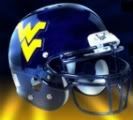Post by elp525 on May 20, 2010 4:46:37 GMT -5
Thursday May 20, 2010
Expansion, format of basketball tournament to be hot topics of debate
by Mike Casazza
Daily Mail sports writer
MORGANTOWN, W.Va. - Big East Conference coaches, administrators and executives descend upon Ponte Vedra Beach, Fla., this weekend for the most important round of league meetings since, well, the last time a rival conference readied for a raid.
Seven springs ago, the Atlantic Coast Conference meetings in nearby Amelia Island, Fla., preceded the Big East's meetings. From the ACC's gathering came a prompt and unexpected decision for the conference presidents to vote on expansion.
The presidents approved the additions just before the Big East meetings. The plan then was widely considered to include Miami, Boston College and Syracuse from the Big East. Ultimately, Virginia Tech would be swapped for the Orange.
This time, the Big Ten is exploring expansion and it's again thought Big East teams could be invited. The Big Ten met this week in Chicago, once more preceding the Big East, although no news came from the event apart from a proclamation from Commissioner Jim Delany that there was no accelerated schedule for expansion.
"There are a lot of similarities," WVU Director of Athletics Ed Pastilong said. "There's still some speculation as to what's taking place, but seven years ago the schools that were mentioned were more prevalent.
"This one here is more speculative and it involves other conferences as well as ours. Back then, it was just us and the ACC. This time there's been talk as well all know about the Big East as well as other schools."
The expansion topic isn't as sudden this time. The Big Ten began its thought process months ago and the Big East has been navigating a fluid and uncertain situation ever since. Yet while there are differences the second time around, there is one useful similarity.
"It's equally as concerning," Pastilong said. "Having gone through it once already, you're ready for what lies ahead somewhat, but you still don't know what's going to happen until it's unveiled or until it happens. There is no standard procedure."
The Big East's meetings, which begin Sunday and conclude early Wednesday, are an annual event designed to discuss and workshop different topics. Pastilong said the expansion situation has been aided by the assistance of former NFL Commissioner Paul Tagliabue as well as regular conference calls.
He expects no expansion news to come from the meetings, although it's an obvious talking point.
"At the same time, we know what else we have to discuss," said John Paquette, the Big East associate commissioner for communications. "We know that situation is out there, so of course we're going to discuss it. How much time we spend on it, I don't know.
"That will be up to (Commissioner John Marinatto) and the (16 school) ADs to decide. Certainly people are probably paying attention a little more this year to what goes on at these conference meetings than what they have in the past, but a lot of this is for what we'd call 'regular business.'"
Athletic directors meet as a group and then in joint sessions with football and men's and women's basketball coaches.
The AD meetings are for mostly administrative matters like budgets and new and proposed NCAA legislation.
The eight football coaches typically meet later in the summer before media day in Newport, R.I. Many will be in attendance this week, including WVU's Bill Stewart, to talk NCAA legislation.
"If there's anything they want to discuss or sponsor we need to get it into the NCAA cycle before we meet in Newport," Paquette said. "If we wait until then, then we're discussing things already in the legislative cycle."
Stewart said he wanted to discuss with his peers the ban on wedge blocks on kickoffs. The football coaches, ADs and Big East officials also will review other officiating matters, scheduling and a revamped bowl package.
The men's and women's basketball coaches attend every year. Topics will include scheduling, television and legislation coaches support or would like to see supported. Additionally, Paquette said officiating concerns usually are included.
"I think workload is always discussed, but you're talking about independent contractors (officials), so there's not a lot that can be done about that sort of thing," Paquette said. "They do talk about officials and they talk about officials individually, but they also talk about rules and rule changes and just officiating in general and how it's conducted."
The format of the Big East tournament was a significant topic last year and figures to be revisited again this year. Presently, all 16 teams make the tournament. The top four seeds receive two-round byes while the next four receive a one-round bye, but that concept has been criticized in each of its first two years.
WVU was the only top-four team to win a Big East tournament game this season. The Mountaineers needed a Da'Sean Butler buzzer-beater to advance past Cincinnati. Last year, the top four teams went 2-2 with a Villanova victory coming at the buzzer.
The alternative that includes all 16 teams and has the most support has the top four teams playing in the first round against the bottom four with the winner receiving a bye the next day. That day, the teams seeded Nos. 5-12 would play and advance to play the first day's winners.
Pastilong said the Mountaineers will "wait and see how the discussions go and see what the arguments are either way."
Expansion, format of basketball tournament to be hot topics of debate
by Mike Casazza
Daily Mail sports writer
MORGANTOWN, W.Va. - Big East Conference coaches, administrators and executives descend upon Ponte Vedra Beach, Fla., this weekend for the most important round of league meetings since, well, the last time a rival conference readied for a raid.
Seven springs ago, the Atlantic Coast Conference meetings in nearby Amelia Island, Fla., preceded the Big East's meetings. From the ACC's gathering came a prompt and unexpected decision for the conference presidents to vote on expansion.
The presidents approved the additions just before the Big East meetings. The plan then was widely considered to include Miami, Boston College and Syracuse from the Big East. Ultimately, Virginia Tech would be swapped for the Orange.
This time, the Big Ten is exploring expansion and it's again thought Big East teams could be invited. The Big Ten met this week in Chicago, once more preceding the Big East, although no news came from the event apart from a proclamation from Commissioner Jim Delany that there was no accelerated schedule for expansion.
"There are a lot of similarities," WVU Director of Athletics Ed Pastilong said. "There's still some speculation as to what's taking place, but seven years ago the schools that were mentioned were more prevalent.
"This one here is more speculative and it involves other conferences as well as ours. Back then, it was just us and the ACC. This time there's been talk as well all know about the Big East as well as other schools."
The expansion topic isn't as sudden this time. The Big Ten began its thought process months ago and the Big East has been navigating a fluid and uncertain situation ever since. Yet while there are differences the second time around, there is one useful similarity.
"It's equally as concerning," Pastilong said. "Having gone through it once already, you're ready for what lies ahead somewhat, but you still don't know what's going to happen until it's unveiled or until it happens. There is no standard procedure."
The Big East's meetings, which begin Sunday and conclude early Wednesday, are an annual event designed to discuss and workshop different topics. Pastilong said the expansion situation has been aided by the assistance of former NFL Commissioner Paul Tagliabue as well as regular conference calls.
He expects no expansion news to come from the meetings, although it's an obvious talking point.
"At the same time, we know what else we have to discuss," said John Paquette, the Big East associate commissioner for communications. "We know that situation is out there, so of course we're going to discuss it. How much time we spend on it, I don't know.
"That will be up to (Commissioner John Marinatto) and the (16 school) ADs to decide. Certainly people are probably paying attention a little more this year to what goes on at these conference meetings than what they have in the past, but a lot of this is for what we'd call 'regular business.'"
Athletic directors meet as a group and then in joint sessions with football and men's and women's basketball coaches.
The AD meetings are for mostly administrative matters like budgets and new and proposed NCAA legislation.
The eight football coaches typically meet later in the summer before media day in Newport, R.I. Many will be in attendance this week, including WVU's Bill Stewart, to talk NCAA legislation.
"If there's anything they want to discuss or sponsor we need to get it into the NCAA cycle before we meet in Newport," Paquette said. "If we wait until then, then we're discussing things already in the legislative cycle."
Stewart said he wanted to discuss with his peers the ban on wedge blocks on kickoffs. The football coaches, ADs and Big East officials also will review other officiating matters, scheduling and a revamped bowl package.
The men's and women's basketball coaches attend every year. Topics will include scheduling, television and legislation coaches support or would like to see supported. Additionally, Paquette said officiating concerns usually are included.
"I think workload is always discussed, but you're talking about independent contractors (officials), so there's not a lot that can be done about that sort of thing," Paquette said. "They do talk about officials and they talk about officials individually, but they also talk about rules and rule changes and just officiating in general and how it's conducted."
The format of the Big East tournament was a significant topic last year and figures to be revisited again this year. Presently, all 16 teams make the tournament. The top four seeds receive two-round byes while the next four receive a one-round bye, but that concept has been criticized in each of its first two years.
WVU was the only top-four team to win a Big East tournament game this season. The Mountaineers needed a Da'Sean Butler buzzer-beater to advance past Cincinnati. Last year, the top four teams went 2-2 with a Villanova victory coming at the buzzer.
The alternative that includes all 16 teams and has the most support has the top four teams playing in the first round against the bottom four with the winner receiving a bye the next day. That day, the teams seeded Nos. 5-12 would play and advance to play the first day's winners.
Pastilong said the Mountaineers will "wait and see how the discussions go and see what the arguments are either way."





